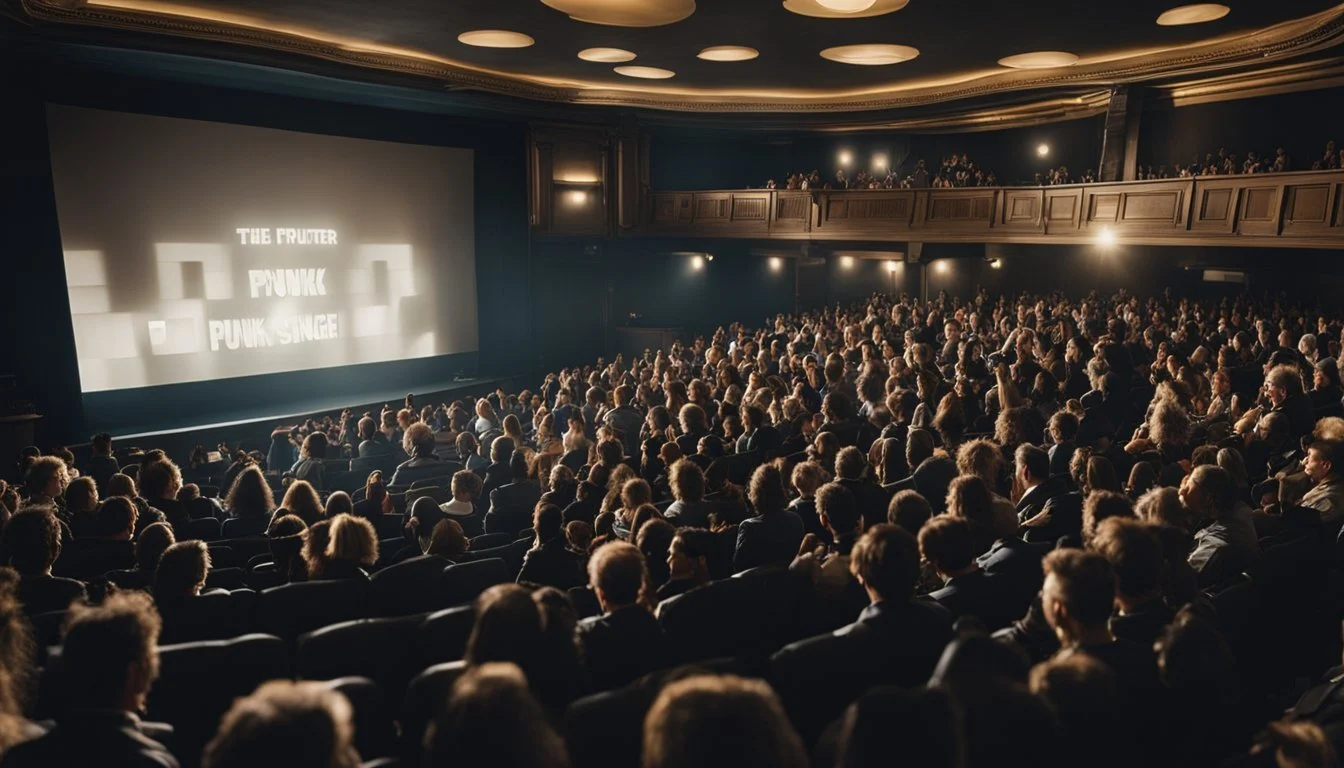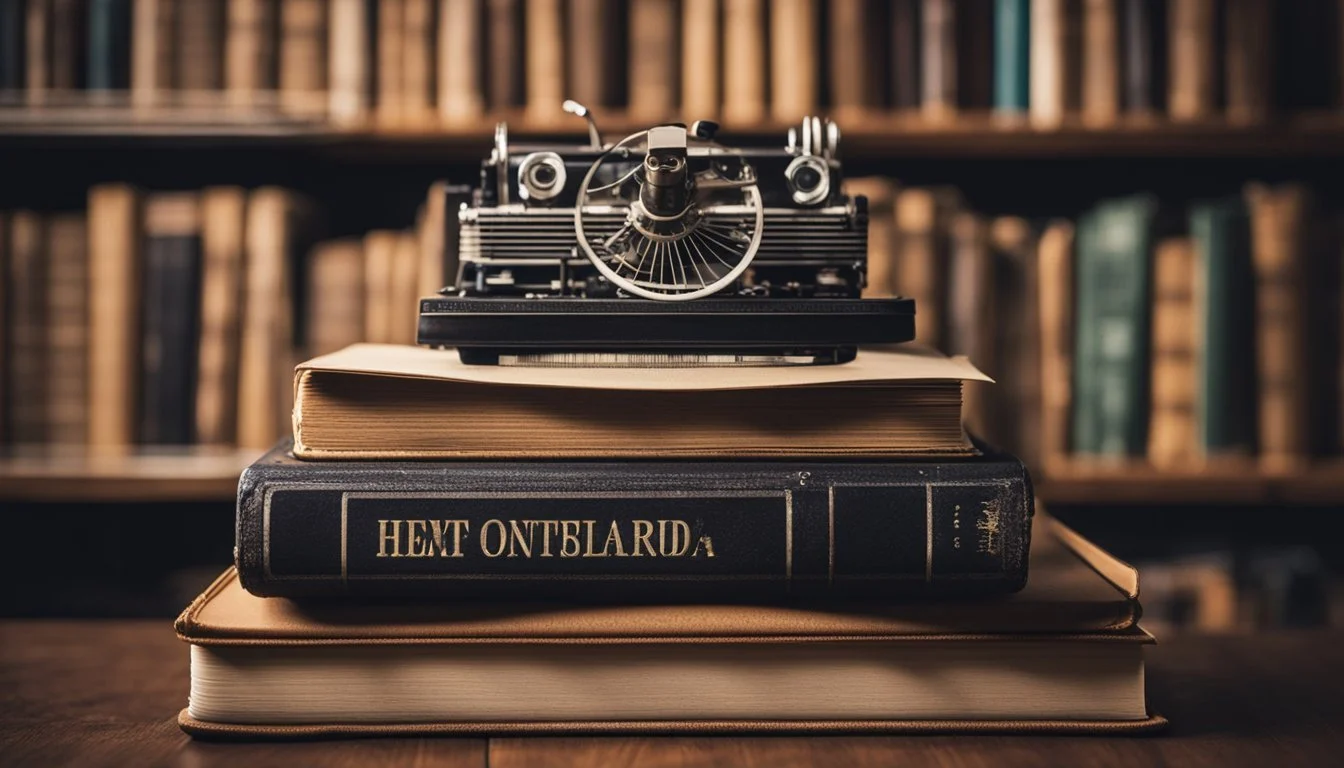9 Must-See Documentaries on Literary Movements
Exploring Influential Eras
Documentaries on literary movements offer a unique lens through which viewers can explore the evolution of literary thought and its impact on society. These films dive deep into various literary periods and their notable figures, providing valuable insights into the sociocultural and political contexts that shaped these movements.
For anyone curious about how literature has influenced and been influenced by the broader world, these documentaries are essential viewing. They feature interviews with experts, rare archives, and compelling narration, making them a rich resource for both literary enthusiasts and casual viewers alike.
1) The Beats and the Counterculture
The Beat Generation emerged in the 1950s and quickly became a significant literary and cultural movement. Key figures like Jack Kerouac, Allen Ginsberg, and William S. Burroughs shaped the movement with their groundbreaking works.
The Beats challenged traditional norms, exploring themes of spirituality, sexual liberation, and the human condition. Their influence extended beyond literature, impacting music, art, and broader societal attitudes.
The documentary "William S. Burroughs: A Man Within" (2010) delves into the life and influence of Burroughs, one of the primary members of the Beat Generation. It provides a comprehensive look at his controversial work and lasting impact.
Learn more about "William S. Burroughs: A Man Within"
2) Paris Was a Woman (1995)
"Paris Was a Woman" is a documentary directed by Greta Schiller. This film offers a captivating glimpse into the vibrant community of women artists, writers, and intellectuals residing in Paris during the early 20th century.
The film highlights notable figures like Gertrude Stein, Alice B. Toklas, Djuna Barnes, and Colette. Through intimate storytelling, it paints a vivid picture of their lives and contributions to the literary and artistic movements of their time.
Utilizing groundbreaking research and newly discovered home movies, the documentary reconstructs the ambiance of Paris's Left Bank. It brings to life the cafes, salons, and bookstores that served as the gathering spots for these creative minds.
Schiller's documentary not only showcases the achievements of these women but also provides context by featuring male contemporaries like Picasso and James Joyce. This enriches the viewer's understanding of the era's cultural landscape.
For more information, visit IMDB.
3) Howl by Allen Ginsberg
"Howl" by Allen Ginsberg is a landmark poem emblematic of the Beat Generation in the 1950s. Ginsberg first read “Howl” publicly at the Six Gallery in San Francisco on October 7, 1955. This event marked a significant moment in literary history, becoming a symbol of counterculture and the burgeoning Beat movement.
The poem critiques the destructive forces of capitalism, conformity, and the American establishment. Ginsberg’s vivid and raw language captured the frustration and aspirations of a generation seeking change. The text's explicit content resulted in a widely publicized obscenity trial, further cementing its place in cultural discourse.
The 2010 film "Howl" directed by Rob Epstein and Jeffrey Friedman, explores the poem's creation and the resulting trial. James Franco stars as Allen Ginsberg, bringing the poet’s struggles and triumphs to life on screen. The film utilizes a mix of live-action, animation, and archival footage to capture the essence of the era and the impact of Ginsberg's work.
For those interested in the dynamics and influence of the Beat Generation, "Howl" provides an insightful look into one of its most pivotal texts. The film offers a compelling portrayal of the poet and the historical context surrounding his masterpiece.
Learn more about the film "Howl" (2010) on IMDB.
4) The Punk Singer (2013)
"The Punk Singer" is a documentary focused on Kathleen Hanna, a pivotal figure in the punk and riot grrrl movements. Directed by Sini Anderson, the film chronicles Hanna's influential career as the lead singer of Bikini Kill and later, Le Tigre.
Hanna's impact on feminist punk is profound. Through personal interviews, archival footage, and commentary from peers, the documentary paints a vivid picture of her journey. Fans of feminist movements will find this film particularly compelling.
The documentary also addresses Hanna's health struggles, shedding light on her battle with Lyme disease. This personal angle adds depth to her narrative, allowing viewers to see her as both a public figure and a person dealing with significant challenges.
For more information, visit Wikipedia or IMDb.
5) The Black Panthers: Vanguard of the Revolution (2015)
Stanley Nelson's documentary, "The Black Panthers: Vanguard of the Revolution," explores the rise and fall of the Black Panther Party. The film delves into the historical context and impact of this radical social and political movement launched by Huey Newton and Bobby Seale in 1966.
The documentary paints a vivid picture of the turbulent 1960s and the formation of the Black Panther Party. It addresses the Party's efforts to challenge racial injustice and oppression through various social initiatives and self-defense.
Featuring interviews with former members, journalists, and historians, the film offers diverse perspectives on the Party's allure and controversies. The documentary also sheds light on the organization's eventual decline due to internal strife and external pressures.
For those interested in African-American history and radical political movements, this documentary provides critical insights into a significant era.
6) Cave of Forgotten Dreams (2010)
Werner Herzog's "Cave of Forgotten Dreams" offers an extraordinary glimpse into the Chauvet Cave in Southern France. This cave houses some of the earliest known human-painted images, dating back around 32,000 years.
The film captures both the artwork and the cave’s natural beauty via stunning 3D cinematography.
Due to the cave's fragile environment, public access is highly restricted. Herzog was granted special permission by the French Minister of Culture to film inside. This rare access allows viewers to witness ancient history otherwise inaccessible to the everyday person.
The documentary intersperses footage of the cave with interviews from scientists and historians, providing a comprehensive look at these prehistoric masterpieces.
Though the original cave is closed to the public, a virtual tour offers a 360-degree view of its interior. This enables a broader audience to appreciate its historical significance.
More information about the film can be found on Wikipedia.
7) Lou Reed: Rock and Roll Heart (1998)
Lou Reed's influence on the rock music scene is undeniable. As a founding member of The Velvet Underground, he was a pivotal figure in shaping avant-garde and alternative music. His contributions extended far beyond his time with the band, leaving an indelible mark on a range of genres.
This 1998 PBS documentary, "Lou Reed: Rock and Roll Heart," provides an in-depth look at Reed’s career and his role in American avant-garde music. The film delves into his time with The Velvet Underground, exploring how the band’s gritty and realistic approach influenced countless musicians.
Lou Reed's solo career is highlighted, showcasing his evolution as a musician, poet, and composer. Notable figures like David Bowie and David Byrne offer insights into Reed’s impact on their work. The documentary features rare interviews and performances, giving viewers a comprehensive view of Reed’s artistry.
The film captures the essence of Reed's rebellious spirit and his commitment to pushing musical boundaries. It is a must-see for anyone interested in the intersection of rock music and literary expression. Watch "Lou Reed: Rock and Roll Heart" to understand the legacy of a true rock pioneer.
8) Trumbo (2007)
"Trumbo" is a documentary directed by Peter Askin that profiles the life and career of acclaimed screenwriter Dalton Trumbo.
Dalton Trumbo was one of the Hollywood Ten, a group of screenwriters blacklisted during the McCarthy era for their alleged communist ties. This film explores Trumbo's fight against censorship and his efforts to reclaim his place in the industry.
The documentary includes readings of Trumbo's letters by actors like Liam Neeson and Michael Douglas, offering a personal glimpse into his thoughts and resilience.
"Trumbo" provides insight into the political climate of Hollywood in the mid-20th century, illustrating the impact of the Red Scare on the arts.
Learn more about Trumbo on IMDb.
9) The Typewriter in the 21st Century (2012)
"The Typewriter in the 21st Century" is a documentary directed by Christopher Lockett. This film takes a nostalgic yet insightful look at the typewriter, a revolutionary machine that shaped the world of writing for much of the 20th century.
Through interviews with enthusiasts, writers, and historians, the documentary explores the typewriter's enduring legacy despite the advent of digital technology. It highlights the small but passionate group of people dedicated to preserving typewriters as functional pieces of history.
Running for 57 minutes, the film delves into the cultural significance of typewriters and their role in the writing process. The documentary emphasizes how these machines are more than just outdated technology; they represent a tangible connection to the past for many aficionados.
Available for streaming on platforms like The Roku Channel, Tubi TV, and Pluto TV, the film can also be rented or purchased on Amazon Video, Apple TV, Google Play Movies, and YouTube.
For more information, you can visit the IMDb page.
Understanding Literary Movements
Literary movements are essential in understanding how literature has evolved through distinct periods and artistic philosophies. These movements are characterized by unique styles, themes, and philosophies which respond to social, political, and cultural changes.
Definition and Characteristics
Literary movements refer to specific periods in literature marked by shared ideas, styles, or themes among a group of writers. These movements often arise from a collective response to contemporary events or prevailing artistic trends. Characteristics such as narrative techniques, thematic focus, and stylistic preferences define each movement.
For example, Modernism emphasized new forms and broke away from traditional narrative techniques. Postmodernism, on the other hand, often plays with narrative structure and embraces paradox. Recognizing these characteristics helps in identifying works from different literary periods and understanding the authors' intents.
Historical Context and Evolution
Literary movements often develop as reactions to prior movements and the sociopolitical context of their time. For instance, Romanticism emerged in the late 18th century as a response to the Enlightenment's emphasis on reason, celebrating emotion and nature. This was followed by Realism, which depicted everyday life and ordinary people, and later by Modernism, which responded to the disillusionment caused by World War I.
Examining these movements in their historical context shows how literature reflects and critiques society's changes. Each movement contributes to the literary landscape by addressing contemporary issues and pushing the boundaries of artistic expression.
Influential Figures in Literary Movements
Literary movements have been shaped by numerous key figures who left an indelible mark on literature and thought. These individuals influenced the direction and themes of various literary eras through their innovative work and philosophical contributions.
Key Authors and Philosophers
Many literary movements feature prominent authors and philosophers whose works have defined and driven the genres. Amiri Baraka and Gwendolyn Brooks were influential in the Black Arts Movement, using their poetry and prose to address racial and cultural identity. Nikki Giovanni and Gil-Scott Heron also played crucial roles, incorporating political activism into their art.
In the Beat Generation, Allen Ginsberg, Jack Kerouac, and William S. Burroughs challenged conventional norms, embracing spontaneity, and exploring the human condition through their writings. T.S. Eliot and Ezra Pound significantly impacted Modernism with their innovative verse and literary criticism.
Impact on Modern Literature
These influential figures from literary movements have had a lasting impact on modern literature. The themes introduced by Baraka, Brooks, and Giovanni, such as identity, culture, and social justice, continue to resonate today in contemporary works.
The spontaneous and free-form styles of Ginsberg and Kerouac inspired writers to explore new narrative techniques. Modernist approaches by Eliot and Pound pushed the boundaries of form and content, influencing generations of poets and novelists. The lasting legacy of these figures can be seen in the diversity and depth of modern literary expression, showcasing the evolution of thought and style.
Analyzing Themes and Motifs
Themes represent the central ideas in literature, while motifs are recurring elements that develop these themes. Together, they shape the narratives and messages conveyed in literary works.
Common Motifs in Various Movements
In Romantic literature, nature is a prevalent motif. It symbolizes beauty, innocence, and the sublime. Contrastingly, in Modernism, motifs such as the fragmented self and disillusionment with societal norms are prominent. These elements highlight the individual's struggles in a rapidly changing world.
Postcolonial literature often features motifs of identity and displacement. These recurring elements underscore the experiences and challenges faced by postcolonial societies. Symbolism and motifs serve as tools that connect the reader to deeper themes inherent in these literary movements.
Relevance to Contemporary Issues
Themes and motifs are not confined to the past; they continue to resonate today. For instance, the motif of alienation in Modernism relates to contemporary discussions on mental health. Characters experiencing fragmentation reflect today’s societal pressures and identity crises.
Postcolonial motifs of identity still reflect current global issues such as immigration and multiculturalism. When analyzing literary movements through themes and motifs, readers gain insight into ongoing societal challenges. These literary tools foster a deeper connection between historical movements and present-day topics.







